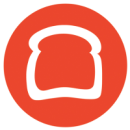When was the last time you accidentally bumped into a manager while waiting to microwave your lunch? Can you recall awkwardly holding a door open because a co-worker was approaching from just a little too far away? How about striking up a conversation about weekend plans with a new hire at the bathroom sink while waiting to wash your hands?
These snapshots from a pre-pandemic work environment might sound insignificant, but they were actually a crucial part of interpersonal team development that led to creative brainstorming and camaraderie. After employees were forced into remote isolation due to Covid-19, tech leaders tirelessly attempted to recreate a similar sense of connection perpetuated by casual everyday interactions. Virtual coffee meetings, spontaneous Slack channel exchanges, Zoom happy hours and app-generated icebreakers all became the norm in a socially distant world.
Transitioning to remote work hasn’t been a seamless process, but it has been a productive one. Opportunities for employees to create a flexible schedule while working from any global location has become an expectation for company benefit packages. Work-life balance and mental wellness have become focal points in leadership discussions around motivation. Finally, interactions previously left up to serendipity have been replaced by team members intentionally creating moments to support each other.
“We don’t have those touch points to reinforce each others’ humanity in a fully remote workplace, so using multi-method approaches becomes essential in making sure the team feels connected,” said Deirdre Costello, director of UX insights at Toast.
To get a better sense of how companies have managed to thrive instead of fumble since going remote, Built In Boston sat down with Costello to discuss the most important lessons her teams have lived through since leaving the office behind and all the ways she has managed to bridge collaborative relationships across a WiFi connection.
When it comes to remote collaboration, what’s an important lesson your team has learned since first transitioning to remote work?
You don’t get culture unless you intentionally create space for it. While this has always been true, you could sometimes slightly trust informal touch points to help build relationships: walking to and from meetings, grabbing a snack or even washing your hands together in the bathroom. We don’t have those touch points to reinforce each others’ humanity in a fully remote workplace, so building in time and using multi-method approaches becomes essential in making sure the team feels supported and connected to each other.
We’ve tried a few different things to maintain this sense of connection. Our team meeting always starts with a little informal banter and we periodically do activities like TeamBuilding.com’s War of the Wizards, which is a total blast. To some extent, though, swag and expensing meals only goes so far. What I think has worked best is when we connect that sense of play directly to the work by purposely taking time to do something together that is playful, but also reinforces our skills and values. It has to be connected enough to the work to feel productive, but different and separate enough to feel like a break from routine.
How are you collaborating differently today than you were a year and a half ago? What steps have you taken to fine-tune your approach?
It’s a lot easier to lose track of each other and lose touch with our stakeholders, and the more you lose touch the harder it becomes to remember the outcomes you have in common. Across the Toast product experience team — research, product design, UI design and industrial design — we’ve gotten creative about the ways we pull our stakeholders into our work in order to build trust.
Where once we might have hung it up in an office hallway, we now have regular show-and-tells to share stories about our work and systems like 15five to manage up. We’ve become much more direct and intentional about the conversations we’re inviting ourselves into, rather than waiting to be invited.
We also recognize that none of these systems or processes are free, and we’ve started to grow our Ops function which supports design, research and UI. This has unlocked additional efficiency as they take over logistical tasks like recruiting, as well as the ability to really look carefully at the roadblocks in our own processes so we can thoughtfully redesign the way we work.
You don’t get culture unless you intentionally create space for it.”
Beyond tools like Slack and Zoom, what tech tools have been particularly helpful in making remote collaboration easier and more successful?
I'm not sure where we’d be without Miro and FigJam. Tools that replicate a white board allowed us to bring a lot of our collaborative, design-thinking toolkit into the remote workplace. Two things I really love about these tools: First, they allow for a variety of communication styles to contribute, so it’s not always just the folks who feel comfortable speaking in a group who get heard. Second, I have a digital record of the collaboration and thought work that I can continue to manipulate and synthesize — not just a picture on my phone.
Our research Ops manager has also built out our Coda instance to be a project tracker, research repository and DIY research toolkit all in one. Being able to mark a project’s status to “done” and having it show up in the repository feels pretty magical, as does having one place we can send folks to help them understand our process and get a sense of how we show up across the organization.







